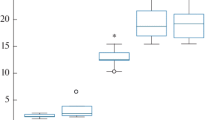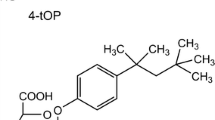Abstract
In Dutch-belted rabbits, pregnancy caused several-fold decrease of in vitro hepatic microsomal aminopyrine, benzphetamine, and hexobarbital biotransformations. In pregnant Sprague-Dawley rats, various kinds of expressing the in vitro rates of hexobarbital biotransformation (per mg of microsomal protein, g of liver, 100 g of body weight) indicated unchanged or slightly elevated microsomal enzyme activity. In vivo, the course of hexobarbital blood levels after i. p. hexobarbital sodium, 100 mg/kg, indicated that the fate of hexobarbital was not primarily determined by the small changes of microsomal enzyme activity but, rather, by changed hexobarbital distribution. Different ways of expressing in vitro rates of aniline biotransformation showed decreased or unchanged enzyme activity during pregnancy and in vivo experiments indicated that these changes did not affect aniline metabolism in living rats. The results pointed out marked species differences in the effect of pregnancy on drug metabolism. Interpretation of in vitro biotransformation data for living animals suggested that with different substrates, microsomal enzyme activity and distribution, respectively, may exert different effects playing either significant or apparently minor role in drug disposition.
Zusammenfassung
Bei holländischen gestreiften Kaninchen verursachte die Gravidität eine mehrmalige Senkung der mikrosomalen Biotransformation von Aminopyrin, Benzphetamin und Hexobarbital in vitro. Bei graviden Sprague-Dawley-Ratten zeigten verschiedene Bezugspunkte der Umwandlungsgeschwindigkeit von Hexobarbital in vitro (per mg mikrosomal Protein, per g Lebergewicht, 100 g Körpergewicht) eine unveränderte oder eine wenig erhöhte mikrosomale enzymatische Aktivität. Der Konzentrationsverlauf von Hexobarbital im Blut nach einer i. p. Applikation von 100 mg/kg NatriumHexobarbital bewies, daß das Schicksal von Hexobarbital nicht so sehr von kleinen Veränderungen der mikrosomalen enzymatischen Aktivität bestimmt wurde, als vielmehr durch Veränderungen in der Verteilung von Hexobarbital während der Gravidität. Verschiedene Bezugspunkte der Umwandlungsgeschwindigkeit von Anilin in vitro wiesen auf eine gesenkte oder unveränderte enzymatische Aktivität während der Gravidität hin, und Versuche in vivo zeigten, daß diese Veränderungen den Anilinmetabolismus in lebenden Ratten nicht beeinflußten. Die Ergebnisse bewiesen, daß die Gravidität einen signifikant verschiedenen Einfluß bei verschiedenen Tierarten auf den Metabolismus von Fremdstoffen ausübt. Eine Interpretation der Ergebnisse der Biotransformation in vitro auf lebendige Tiere wies darauf hin, daß mikrosomale enzymatische Aktivität oder Verteilung bei verschiedenen Stoffen eine minimale, oder anderseits, eine signifikante Rolle in der Beeinflussung deren Schicksals im Organismus haben kann.
Similar content being viewed by others
References
Cochin, J., Axelrod, J.: Biochemical and pharmacological changes in the rat following chronic administration of morphine, nalorphine and normorphine. J. Pharmacol. exp. Ther. 125, 105–110 (1959)
Conney, A. H.: Environmental factors influencing drug metabolism. In: Fundamentals of drug metabolism and drug disposition (eds. B. N. La Du, H. G. Mandel, E. L. Way). Baltimore (Maryland): Williams and Wilkins 1971
Feuer, G., Liscio, A.: Effect of drugs on hepatic drug metabolism in the fetus and newborn. Int. J. clin. Pharmacol. 3, 30–33 (1970)
Gabler, W. L., Falace, D.: The distribution and metabolism of Dilantin in non-pregnant, pregnant and fetal rats. Arch. int. Pharmacodyn. 184, 45–58 (1970)
Gram, T. E., Rogers, L. A., Fouts, J. R.: Further studies on the metabolism of drugs by subfractions of hepatic microsomes. J. Pharmacol. exp. Ther. 155, 479–493 (1967)
Guarino, A. M., Gram, T. E., Schroeder, D. H., Call, J. B., Gillette, J. R.: Alterations in kinetic constants for hepatic microsomal aniline hydroxylase and ethylmorphine N-demethylase associated with pregnancy in rats. J. Pharmacol. exp. Ther. 168, 224–228 (1969)
Gut, I., Becker, B. A.: Effects of diphenylhydantoin (DPH) and pregnancy on in vitro hepatic microsomal drug metabolism (HMDM) in rabbits and rats (Abstract). Pharmacologist 13, 245 (1971)
Gut, I., Becker, B. A.: Heredity of hexobarbital sleeping time and efficiency of drug metabolism in Wistar and Sprague-Dawley rats. Arch. Toxicol. 34, 61–70 (1975)
Gut, I., Nerudová, J., Kopecký, J., Holeček, V.: Acrylonitrile biotransformation in rats, mice and Chinese hamsters as influenced by the route of administration and by phenobarbital, SKF 525-A, cysteine, dimercaprol, or thiosulphate. Arch. Toxicol. 33, 151–161 (1975)
Jackman, N. E. R., Kim, K. S., Mazel, P.: Hepatic microsomal drug metabolism in rats at various stages of pregnancy (Abstract). Pharmacologist 13, 244 (1971)
Kato, R., Gillette, J. R.: Effect of starvation on NADPH-dependent enzymes in rat liver microsomes of male and female rats. J. Pharmacol. exp. Ther. 150, 279–284 (1965)
King, J. E., Becker, R. F.: Sex differences in the response of rats to pentobarbital sodium. I. Males, non pregnant females and pregnant females. Amer. J. Obstet. Gynec. 86, 856–864 (1963)
King, J. E., Becker, R. F., Marsh, R. H.: Sex differences in the response of rats to pentobarbital sodium. II. Female rats in estrus and diestrus. Amer. J. Obstet. Gynec. 86, 865–868 (1963)
King, J. E., Becker, R. F., James, R. T.: Sex differences in the response of rats to pentobarbital sodium. III. The pseudopregnant rat versus the pregnant and nonpregnant female. Amer. J. Obstet. Gynec. 86, 869–875 (1963)
Lowry, O. H., Rosebrough, N. J., Farr, A. L., Randall, R. J.: Protein measurement with the Folin phenol reagent. J. biol. Chem. 193, 265–275 (1951)
Omura, T., Sato, R.: The carbon-monoxide binding pigment of liver microsomes. II. Solubilization, purification and properties. J. biol. Chem. 239, 2379–2385 (1964)
Roberts, R. J., Plaa, G. L.: Effect of norethandrolone, acetohexamide and Enovid on alpha-naphtylisothiocyanate-induced hyperbilirubinemia and cholestasis. Biochem. Pharmacol. 15, 333–341 (1966)
Schlede, E., Borowski, R.: Decreased effect of phenobarbital treatment on microsomal drug metabolizing enzyme activity during gestation. Naunyn-Schmiedeberg's Arch. Pharmacol. 281, 341–355 (1974)
Author information
Authors and Affiliations
Additional information
Supported in part by U.S. Public Health Grant NIGMS 12,675.
Rights and permissions
About this article
Cite this article
Gut, I., Becker, B.A. & Gutová, M. Effect of pregnancy on hepatic microsomal drug metabolism in rabbits and rats. Arch Toxicol 35, 41–47 (1976). https://doi.org/10.1007/BF00333984
Received:
Issue Date:
DOI: https://doi.org/10.1007/BF00333984
Key words
- Microsomal drug metabolism
- Aminopyrine
- Benzphetamine
- Hexobarbital
- Aniline
- Pregnancy
- In vitro and in vivo
- Species




